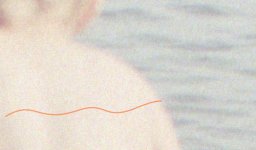mani
Well-known
Once again I'm giving Silverfast a try - I downloaded the trial a while ago but didn't manage to get it activated (probably because I'd used the trial a couple years before on the same computer), but now it worked, so I have 30 days to give it a thorough investigation. There will be a few questions.
For these tests I'm scanning on the Nikon Coolscan LS9000.
I am not using any glass holders - so no artefacts are Newton rings.
I am scanning at the scanner's optical resolution (4000ppi)
I am scanning 48bitHDR Raw linear negative files with a gamma gradation of 2.2 to match my settings in ColorPerfect
I am using Multiple Exposure - which is a second pass for extra dynamic range
All other image manipulation tools are switched off when using the 48bitHDR Raw setting
The first question:
I've noticed that if I have an area that's extremely over-exposed in my negative (I'm often pushing my exposures to +4 or +5) then that area of the scan has a VERY subtle 'fingerprint whorl' wave pattern (see image of a tiny area of a negative zoomed to 600%). The line I drew on the image didn't really follow the wave so well I see now - sorry.
At normal viewing resolution this isn't really visible, but it becomes visible when zoomed to 200% and upwards.
Now I honestly don't need to be told that this is irrelevant to the finished print or to 'stop pixel-peeping' etc. I'm trying to make a decision whether to buy the software (which costs around €400 for the LS9000 I believe) and I'm simply trying to investigate possible problems. So if anyone has seen the same artefacts in their scans and know the reason/cure, then I'd love to hear about it.
PS: I've written to Silverfast, but haven't received an answer yet. But I'm more interested in other users' experiences, in any case.
For these tests I'm scanning on the Nikon Coolscan LS9000.
I am not using any glass holders - so no artefacts are Newton rings.
I am scanning at the scanner's optical resolution (4000ppi)
I am scanning 48bitHDR Raw linear negative files with a gamma gradation of 2.2 to match my settings in ColorPerfect
I am using Multiple Exposure - which is a second pass for extra dynamic range
All other image manipulation tools are switched off when using the 48bitHDR Raw setting
The first question:
I've noticed that if I have an area that's extremely over-exposed in my negative (I'm often pushing my exposures to +4 or +5) then that area of the scan has a VERY subtle 'fingerprint whorl' wave pattern (see image of a tiny area of a negative zoomed to 600%). The line I drew on the image didn't really follow the wave so well I see now - sorry.
At normal viewing resolution this isn't really visible, but it becomes visible when zoomed to 200% and upwards.
Now I honestly don't need to be told that this is irrelevant to the finished print or to 'stop pixel-peeping' etc. I'm trying to make a decision whether to buy the software (which costs around €400 for the LS9000 I believe) and I'm simply trying to investigate possible problems. So if anyone has seen the same artefacts in their scans and know the reason/cure, then I'd love to hear about it.
PS: I've written to Silverfast, but haven't received an answer yet. But I'm more interested in other users' experiences, in any case.


